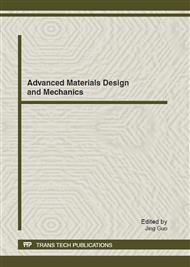p.3
p.7
p.11
p.15
p.19
p.23
p.27
p.31
pH-Induced Cross-Linking of Dopamine-Containing Block Copolymers with Fe3+ to Form Self-Healing Hydrogels
Abstract:
The unusual amino acid 3,4-dihydroxyphenylalanine with a catechol side chain is believed to impart both adhesive and cohesive characteristics of mussel adhesive proteins. Inspired by the pH-tunable coordination between catechol moiety and Fe3+, responsible for the high extensibility and self-healing properties of the cuticle of mussel byssal threads, we report the synthesis of a dopamine modified Pluronic F68 block copolymer (PluF68-Dopa) with high coupling efficiency and utilization of catechol-Fe3+ interactions to yield cross-linking hydrogels with enhanced mechanical strength and self-healing properties. Ultraviolet-visible spectroscopy was used to identify PluF68-Dopa-Fe3+ complex species via pH control in dilution solution. At lower pH, concentrated PluF68-Dopa-Fe3+ mixture remained a fluid, whereas at higher pH an elastomeric gel immediately formed. PluF68-Dopa-Fe3+ cross-linked hydrogels are not only pH-responsive but also possess self-healing properties due to the reversible bond interactions between catechol moiety and Fe3+. These new biomimetic materials are expected to have potential biomedical and engineering applications.
Info:
Periodical:
Pages:
11-14
Citation:
Online since:
September 2012
Authors:
Keywords:
Price:
Сopyright:
© 2012 Trans Tech Publications Ltd. All Rights Reserved
Share:
Citation:



